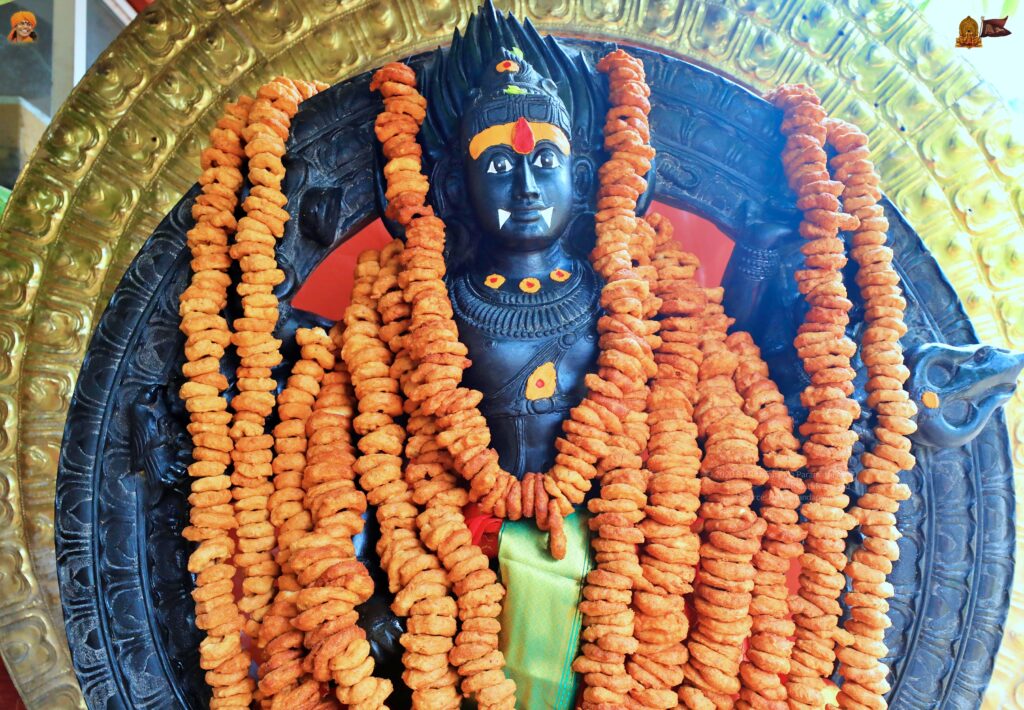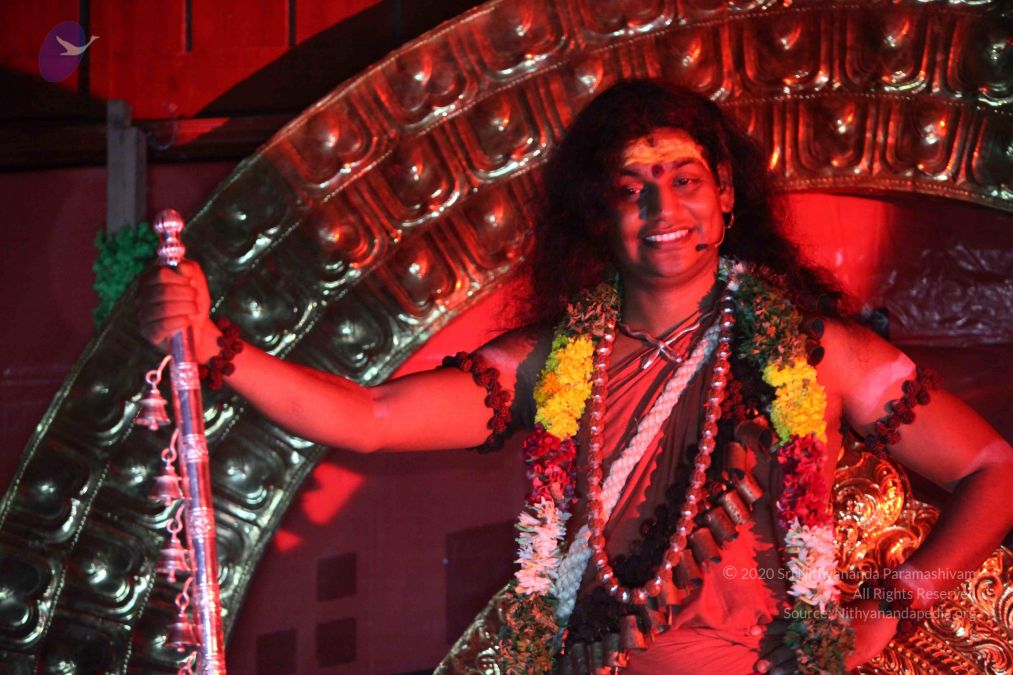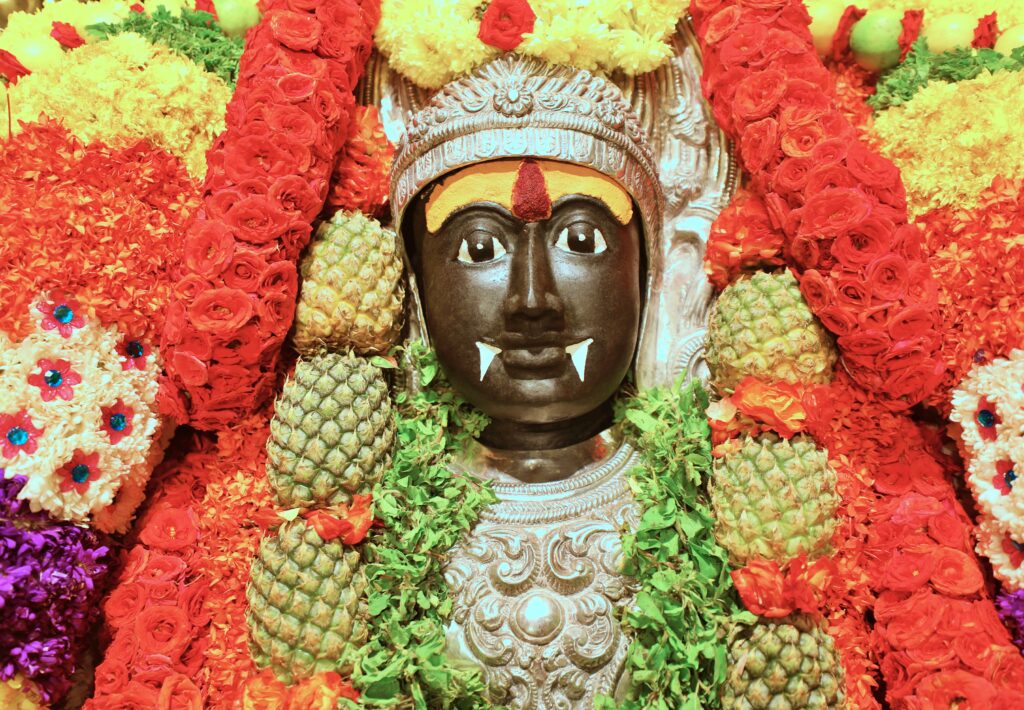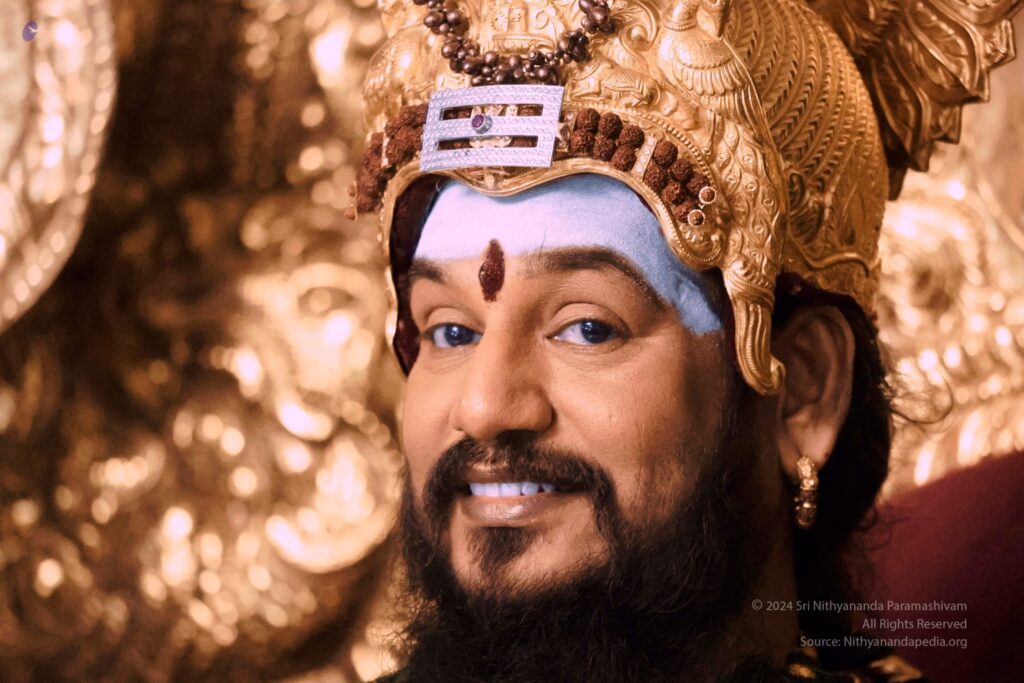Kalabhairava’s Form
In this profound revelation, THE SPH Bhagavan Sri Nithyananda Paramashivam shares deep insights into the form of Kalabhairava, the ferocious yet compassionate manifestation of Paramashiva. How does this seemingly fearsome form embody the ultimate love and grace of Paramashiva?
THE SPH Explains:
“If you see the Kalabhairava in Nithyananda Dhyanapeetam, Bengaluru Adheenam, you will notice that he is standing on the time shaft. This signifies that he is the Lord of Time, existing beyond its constraints. His posture—with the left leg forward representing the past and the right leg back symbolizing the future—illustrates that the past precedes the future.
The past we project into the future is like a ghost, haunting and distorting our lives. When we face and dissolve this projection, we metaphorically ‘kill’ the past. This is symbolized by the skull Kalabhairava holds in his hand—the un-lived life, the essence of unresolved time. The skull devours everything offered to it, signifying Kalabhairava’s hunger to liberate life from the clutches of projected pasts.Title:
“Unveiling the Compassionate Ferocity of Kalabhairava’s Form”
Revised Blog Post:
Kalabhairava’s Form
In this profound revelation, THE SPH Bhagavan Sri Nithyananda Paramashivam shares deep insights into the form of Kalabhairava, the ferocious yet compassionate manifestation of Paramashiva. How does this seemingly fearsome form embody the ultimate love and grace of Paramashiva?
THE SPH Explains:
“If you see the Kalabhairava in Nithyananda Dhyanapeetam, Bengaluru Adheenam, you will notice that he is standing on the time shaft. This signifies that he is the Lord of Time, existing beyond its constraints. His posture—with the left leg forward representing the past and the right leg back symbolizing the future—illustrates that the past precedes the future.
The past we project into the future is like a ghost, haunting and distorting our lives. When we face and dissolve this projection, we metaphorically ‘kill’ the past. This is symbolized by the skull Kalabhairava holds in his hand—the un-lived life, the essence of unresolved time. The skull devours everything offered to it, signifying Kalabhairava’s hunger to liberate life from the clutches of projected pasts.
The Story of Devi Annapoorani and Kalabhairava
Once, Devi Annapoorani, the goddess of nourishment, blessed Shiva with the ultimate food for liberation. Shiva approached her, saying:
“jnana-vairagya siddhyartham bhiksham dehi ca Parvati”
(Oh Devi, grant me the nourishment of knowledge and detachment.)
Devi offered grains representing the great truth: the wisdom of not projecting the past into the future. When these grains were placed in the skull, the skull relished the food so deeply that it jumped out to consume more. This act liberated Shiva from the skull, symbolizing freedom from the haunting past and the ego’s constraints.
The Trishul and the Ego
The trishul carried by Kalabhairava represents the honesty required to destroy the ghost of the ego and the past. In Vedic history, Kalabhairava, a form of Sadashiva, decapitated the ego of Brahma by cutting off his fifth head—the head symbolizing play turned into ego-driven game. Brahma had momentarily mistaken his playful creation for a competition, and Kalabhairava, in his divine ferocity, corrected this distortion.
Kalabhairava’s Glorious Gaze
Kalabhairava’s form evokes terror in inauthentic souls who cling to hypocrisy and ego. Yet, for those who are willing to drop their pretenses, his gaze is a portal to liberation. His ferocity is but a reflection of his compassion, cutting through illusions and bestowing ultimate freedom to those who surrender to his divine presence.
Key Takeaway
The greatness of time lies in its understanding. With this awareness, when we scan our problems through the lens of truth, the haunting ghosts of our past dissolve effortlessly. Kalabhairava stands as a reminder to embrace authenticity, destroy ego, and step into liberation.
Invoke the grace of Kalabhairava to transform your life.



